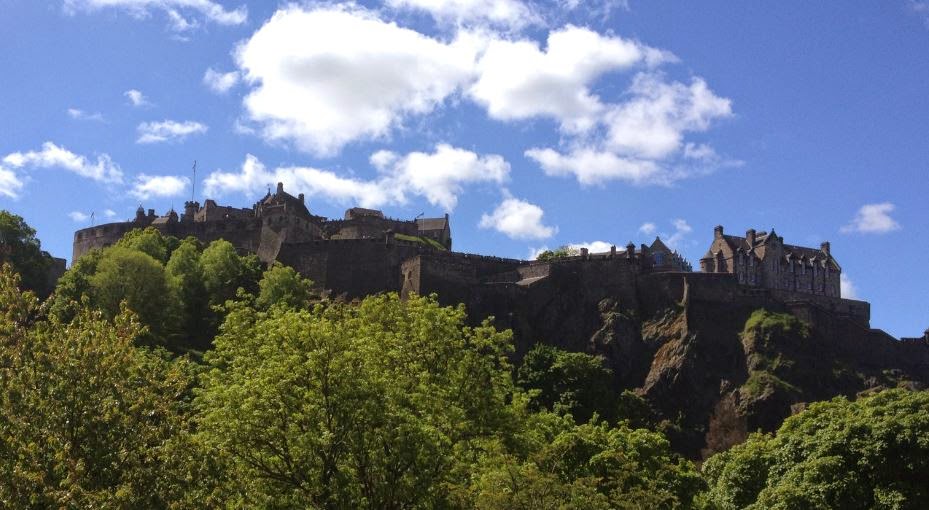It’s
all over but the shouting…and there is still plenty of that going on.
We
have had a bird’s eye view of the Scottish Referendum. On September 18th the Scots had
the opportunity to vote a simple “YES” or “NO” for independence from the United
Kingdom. A "YES" vote would have made Scotland a Commonwealth country similar to Canada. A "NO" vote would have them remain as one of the four countries in the UK. As you have probably heard the
vote turned out to be “NO” and Scotland will stay as part of the UK. I was very surprised to see that 85% of registered voters came out to cast their ballots.
Scotland
has always wanted to be independent from England…for the last 700 years. Independence has been a constant point of discussion since
the Battle of Bannockburn in 1314 which was a major battle for Scottish independence. The Battle of Culloden was the last big
battle between the Scots and England in 1746…a sound victory for England. At least this time the “battle for
independence” was at the voter’s box instead of on the battle field.
There
was a referendum in 1997 where the Scots voted for partial independence and the
Scottish Parliament was established in 1998 and the first meeting was held in
1999. The Scottish Parliament has
authority over certain things – the two main items are welfare and education – but they receive their
funding from Westminster. It's kind of like a parent (Westminster) giving a child (Scottish Parliament) an allowance and
telling them to spend it wisely, but that is all you get. The Scots wanted more taxation power (sound
similar to taxation without representation) so they could have more money for
social programs. Already the Scots
provide free University tuition to everyone which is not done in England.
The
Labour Party pushed to lower the voter age to 16 which was seen as an effort to
get more young people to vote who would hopefully be “YES” votes. Up to Election Day, the polls showed an even
race…back and forth between YES and NO.
To the surprise of many the vote was not that close…it ended 55% NO and
45% YES. Scotland will stay part of the
UK.
Now
some of the discussion (or shouting) is about the other “children” – Wales and Northern
Ireland, and also about the “parent” (England) feeling that they have given too
much to the spoiled children to the North (the Scots). Westminster made substainal promises to Scotland on the eve of the election.
One of the big issues during the campaign was
about which currency Scotland would use if they went independent. Many in the “YES” camp said they would
continue to use the Pound Stirling, others said they would have a Scottish
Pound, and others said they would go to the Euro (as they would have probably
applied to be a member of the European Union.)
Lots of confusion over the currency issue and the effect on the monetary system. The royal monarchy
entered into the debate as the “YES” camp didn’t want to “give up the Queen”…she
would still be welcome royalty, but as a guest when she visited other
commonwealth countries such as Canada and Australia.
This is the Holyrood Palace where the Queen lives when she comes to Edinburgh.
With
the “YES” vote, the Queen still has her royal residence in the Holyrood Palace
in Edinburgh and her summer castle in Balmoral and Scotland is still on the Pound
Stirling. One thing that I think will come out of this
vote is that the United Kingdom will be seen in the future more as four
countries rather than England and three “other” countries. It is all about politics and who is paying
for all the social programs implemented by parliament.
As
a side note about flags…The Union Jack is a combination flag. It is a combination of the Scottish Flag (the
St. Andrew's Cross), the English flag (St. George's Cross) and the Irish (St.
Patrick's Cross). Not sure what happened to Wales in this process, other than the English crushed them back in the 13th century and they are just now awakening...I guess the Welch contribution would have been a red dragon in the center of the flag.
The Welch Flag...
There
is also one other Scottish flag…the Royal Banner, or commonly known as the Lion
Rampart of Scotland. Historically this
royal banner was the flag of the King of Scots and differs from the national
flag – St. Andrews Cross. The earliest recorded
use of the Lion Rampart as the royal emblem in Scotland was by Alexander II in
1222.
The most important results of all the voting for independence is that you can rest assured...the world is still safe as there is still enough haggis for everyone!!!









No comments:
Post a Comment